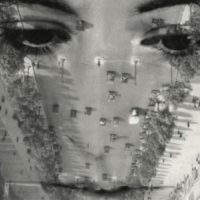000
100
%
Arts, Imagery, Society (ArtIS)

Aenne Biermann, Paris Champs-Elysées, vers 1928, localisation inconnue
Présentation
Going beyond art history in the strict sense of the term, the work carried out is part of the wider field of visual and material studies.
The various uses and applications of visual artefacts – from the ‘fine arts’ and architecture to the decorative arts, photography and multimedia images – are considered within the broader field of modern, post-modern and extra-European cultures.
Attuned to the dialogue between art history and the other human and social sciences, ArtIS researchers are interested in historiographical constructions, the status and aesthetic models of images and objects, their political function, and their inclusion in the social space of the collection, the exhibition, the museum, and the market.
Arts, Imagery, Society (ArtIS) brings together LARHRA researchers who share an interest in the arts, images, and visual and material cultures in early modern, modern, and contemporary societies.
Thématique 1
The animal/animality
The animal is an ever-present subject of debate in today’s society, engaging with a wide range of political, historical and philosophical issues. The history of art has a special relationship with the animal. Our aim is to encourage the convergence of current research from a variety of backgrounds (ethology, law, philosophy, ethnology), which seeks to consider animals in their singularity and not solely through the prism of anthropocentrism. The animal forces us to rethink certain epistemological and theoretical preconceptions, and allows us to redefine the ambitions and limits of these scientific fields, which are mainly informed by the humanist ideal.
1 .1 Animal studies put to the test by the social sciences
Thematic research will be developed and may take several directions: representation and imagination of a particular animal, animals as motifs or ‘models’, artistic practice of the animal, materials derived from animals, autobiography, identification, violence, satire, etc.
Thématique 2
The body and appearances
This theme is devoted to the different conceptions, representations and theorisations of the human body as a “lieu des images” (“locus of images”) (H. Belting). The study of political, economic and social constructions of appearance is at the heart of complementary approaches to iconography, anthropology and social history.
2 .1 Portraiture and its social constructions
Analysis of the portrait in the West focuses on its mimetic, symbolic, heraldic and allegorical manifestations, in terms of the history of power, education, costume, parenthood, dance and gender.
2 .2 Visual satire
The political and anthropological dimensions of imagery are explored through satire and caricature, in relation to the animal/animality theme.
2 .3 Arts, sexuality and modernity
In line with post-feminist, decolonial and queer theories, various themes will be addressed, such as the materiality of bodies, appearances and sexuality, and the evolution of art historiography in contact with gender studies.
Thématique 3
Materiality / material culture
The study of the materiality of objects reveals societal phenomena and their structural invariants, in order to reconsider the role and identity of artefacts. The practical dimension of the creative process, techniques, and uses will enable us to broaden the perspective to include sidelined creations.
3 .1 Material culture and fringe cultures
Through the examination of objects from “fringe” cultures (subcultures, countercultures and alternative cultures), another “histoire de vie des objets” (“history of the life of objects) (I. Kopytoff) is being written, which questions the artistic categories and hierarchies crystallised in the 19th century in the divisions between the fine arts and the decorative arts, the applied arts and crafts, and major art and minor art.
- 2 Materiality / immateriality
Materials and materiality are inseparable from the conception, production and interpretation of architecture and visual artefacts. At a time when culture and research are undergoing digital transformation, the presentation and use of materials harbour characteristics that require exploration beyond their technical parameters.
Thématique 4
Local/global
Connected with space, movement and scale, this theme challenges binary oppositions through the study of the movement of objects and ideas, seen in their dynamics of interconnection and interdependence.
4.1 Passages and smugglers in a globalised Europe
From a globalised perspective, the aim is to shift the Western gaze towards the identification of transit routes and intermediaries, through the study of the Mediterranean since the Renaissance and of artistic mobility across Europe.
- 2 Transcontinental global circulation, policies and practices from the Second World War to the present day
Favouring a transnational analysis, the study of artistic displacement and its relationship to the configuration of a globalised geopolitical order will focus on the cultural sphere of connected transoceanic enclaves (Southern and Eastern Europe, Latin America, Africa, and Asia).
4.3 Collections and markets
The organisation of the art market and collections is the result of interactions between artists, dealers, collectors and institutions. The study of these artistic spheres engages with the circulation of objects, the formation of views and knowledge, and the generation of economic and ideological artistic values.
- 4 – The arts in the Auvergne-Rhône-Alpes region
A hub between Northern Europe and the Mediterranean world, this dynamic centre of artistic migrations, exchanges and reimaginings will be examined through the role of institutions, elite social circles and power plays.

Aenne Biermann, Paris Champs-Elysées, vers 1928, localisation inconnue